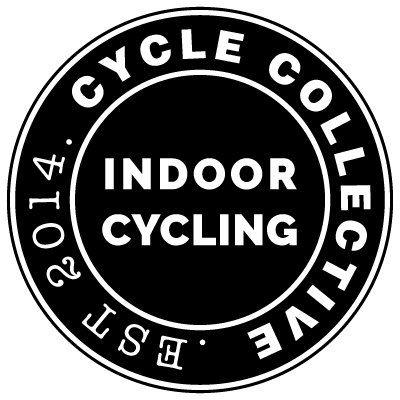
10 Feb What Muscles Does Spinning Work?
Rarely do you find a gym without a spin room. A spin room is full of stationary bikes with either an automated video prompter or a live spin instructor. There are many reasons why this class is so popular, as they provide a lot of bang for your buck. From high-calorie burn rates to exhaustive cardiovascular workouts, spin classes offer many benefits for people dedicated to optimising their health or losing weight.
So, what are the major benefits of a spin class, and what muscle groups do you utilise when you pound the pedals? Read on to find out what muscles you use in a spin class and why Cycle Collective offers the best spin classes in Melbourne.
The benefits of spin classes
There are many reasons why a spin class offers so many benefits from one single exercise session.
Afterburn
Spin classes are a type of HIIT, short for high-intensity interval training. HIIT involves short to medium bursts of high-intensity exercise with short rest periods between rounds. This type of training produces something called the afterburn effect.
The technical term for the afterburn effect is EPOC, which stands for excess post-exercise oxygen consumption.
EPOC is a phenomenon that relates to the number of calories burnt post-workout, meaning the increased metabolic effect achieved from spin classes keeps you burning calories long after the spin class is over. A good spin class could see an advanced practitioner reap the benefits of the afterburn effect for up to 72-hours post-spin class.
Low impact exercise
Spin classes are classified as a low impact exercise, meaning your body gets a solid workout without the risk of injury from excessive weight or the potentially negative impact on joints, ligaments and muscle tissue that occurs with exercises like running and jumping.
Community gains
Spin classes, either in a facility or at home online, generally involve more than just yourself. This can provide a sense of community that can motivate you to keep up with the rest of the class, pushing through plateaus and taking your fitness to the next level.
Cardiovascular training
Heart disease is one of Australia’s biggest killers, and the best way to negate this risk is with regular cardiovascular workouts, like the type you receive in a spin class.
Spin classes work out your lungs and heart to the max, providing you with increased lung capacity and offering a solid workout to your most essential muscles; your heart muscles.
Muscle groups used in a spin class
Cycling engages many of your body’s major muscle groups, providing a full-body exercise that achieves muscle gain and muscular endurance.
Quadriceps
Your quadriceps, also known as your quads or thighs, are the large muscle group in the upper leg running down from the hips to the knees.
These powerful muscles are responsible for approximately 39-per cent of your pedal power, reaching their peak from around two on the clock to the bottom of your pedal stroke.
A regular spin class could help you see significant improvements in your power and increases stamina during other exercises like:
- Squats
- Lunges
- Lateral lunges
- Box jumps
- Weighted press and more
You may also see improvements in leg control during practices such as pilates and yoga.
Hamstrings
The muscle group known as the hamstrings runs down the back of your legs between the buttocks and back of the knee. These essential muscles contribute to approximately 10-per cent of your pedal power.
The hamstrings help sweep the pedals back to around the nine o’clock mark in your stroke, helping to reset the pedal for the next push down.
These muscles play a significant role in stabilising the lower half of your body, meaning a regular spin session could improve your balance and coordination.
Hip flexors
Though the hip flexors are only responsible for around four per cent of your cycling power, they are vital for peddling, helping you get back to 12-o’clock and reset your stroke.
Spin classes give these important muscles a good workout and help supplement runners, giving your hip flexors a low impact exercise during recovery periods.
Glutes
The gluteus maximus, also called the buttocks, is the part of your body that cushions your hips and supports the lower back when you sit.
These large muscle groups help you extend your hips and produce around 27-per cent of your pedal energy. Your glute muscles are most active at the top of your stroke as you get ready to force the spin bike pedals down. A weekly spin class will not only help you with exercises like squats, lunges and hip thrusts; it will also help get the tight, toned butt muscles most people aspire to achieve.
Calves
Your calves, including the gastrocnemius at the top, and the soleus below, are found at the back of the lower leg, behind the knee, down to the ankle.
These muscles are responsible for 20-per cent of your pedal power load and are most engaged at around the six on the clock point of your stroke, ready for the shin muscles, known as the tibialis anterior, to kick in as you point your toes.
Other muscle groups used in spin classes
As mentioned earlier, although cycling is a leg-heavy exercise, spin classes do engage significant muscle groups around the whole body.
Other major muscle groups engaged during a spin class include, but are not limited to:
- Back muscles
- Core muscles
- Shoulders
- Arms
- Forearms
- Hands, wrists and more
Spin classes can kick even the most seasoned fitness enthusiast into the next gear, producing noticeable improvements in a minimal timeframe.
Spin classes are also much safer than riding on the roads, meaning no car accidents, fall hazards, or breathing in pollution while riding on major roadways. So, book in a class, jump on the pedals and smash your fitness goals. There is everything to gain with spin fitness and nothing to lose.
Are you Interested in trying a spin class? Why not join Melbourne’s best spin classes at Cycle Collective. For more information or to book a spin class, call our friendly helpdesk today, or send your enquiry via email, and one of our team members will respond promptly.



